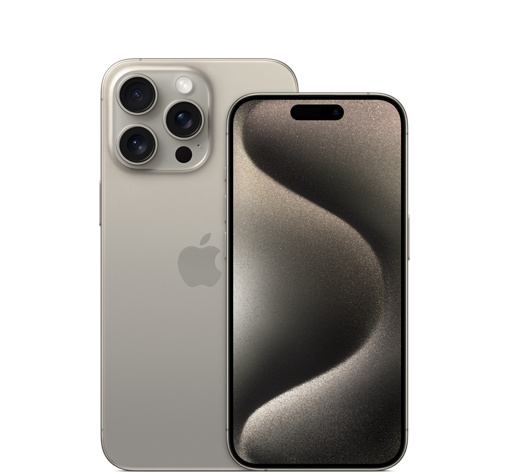The usefulness of an iPhone heavily relies on its battery life.
Since the inception of the first iPhone, users have been sharing tips on how to optimize battery life and lifespan to maximize performance from each charge.
Through collective efforts, we’ve gained insights on prolonging iPhone battery longevity.

However, it’s crucial to recognize when it’s time to replace your iPhone battery.
Apple brought in the iPhone Battery Health feature, now a standard part of iOS device settings. Let’s delve into this feature, highlighting ways to optimize iPhone battery performance and knowing when it’s time for a battery replacement. If you prefer not to enhance your battery health, think about upgrading your device or selling your iPhone to ready buyers.
Ever since the inception of iPhone, preserving battery life has been a major worry for iPhone users who heavily depend on their devices daily.
To guarantee peak performance and prolong the battery’s lifespan, it’s crucial to employ efficient battery-saving methods. In this piece, we’ll delve into five practical strategies to maintain your iPhone battery life effectively.
1. Optimise display settings to preserve battery life
The screen eats up a lot of battery on your iPhone. Tweaking the display settings can really make a difference in how long your battery lasts. Kick things off by turning on auto-brightness. This lets your device adapt the screen brightness based on the surrounding light, cutting down on power use when your screen is too bright for no reason.
Additionally, reduce the screen timeout duration in the Settings menu to a shorter interval. This way, your iPhone’s display will turn off more quickly when not in use, conserving precious battery power. Finally, disabling dynamic wallpapers and motion effects can also save battery life by reducing the graphical processing load on your device.
2. Manage background app refresh
Background App Refresh lets apps update content in the background. It’s handy but can drain your iPhone’s battery. To save battery, head to Settings, tap General, then Background App Refresh. From there, you can turn off the feature altogether or pick which apps can refresh in the background.
If you’re not using certain apps often or they don’t need constant updates, think about turning off Background App Refresh for them. For crucial apps, choose the “Wi-Fi” option to limit background refresh to when you’re on Wi-Fi. This helps save battery while keeping important apps current.
3. Minimise location services
Location Services enable your iPhone to provide accurate location data to apps. However, they can significantly impact battery life by continuously using GPS, Wi-Fi, and cellular data. To preserve battery life, review and manage your location settings in the Privacy section of the Settings menu.
Disable location services for apps that don’t require it or set them to use your location only while using the app. This ensures that apps only access location data when you actively use them, reducing battery drain from unnecessary background processes. Additionally, consider using Wi-Fi instead of cellular data for location-based services whenever possible, as Wi-Fi consumes less power.
4. Enable Low Power Mode
Apple’s Low Power Mode is a useful feature that conserves battery life during critical moments. When enabled, it reduces or disables certain background processes and visual effects to extend battery usage. Activate Low Power Mode by going to Settings, selecting Battery, and toggling the option on.
While in Low Power Mode, your iPhone will automatically adjust various settings, such as reducing mail fetch intervals and disabling automatic downloads. Although some functionalities may be temporarily limited, Low Power Mode ensures your iPhone stays functional when you need it most, allowing you to conserve battery power until you can recharge.
5. Update software and manage push email
Making sure your iPhone’s software is up to date is key for optimizing battery life. Software updates frequently bring enhancements in power management and battery efficiency, keeping your device running smoothly. To look for updates, head to Settings, tap General, then Software Update.
Furthermore, managing your email settings can also help save battery life. Instead of using the default push email setting, which constantly fetches new messages, consider changing it to manually fetch or fetch at longer intervals. This way, your iPhone won’t use excessive power constantly checking for new emails, extending battery life.
Final thoughts on how to preserve your iPhone battery life
Ensuring your iPhone’s battery lasts longer and stays healthy is crucial for uninterrupted use. By adjusting display settings, controlling background app refresh, limiting location services, activating Low Power Mode, and updating software regularly, you can significantly boost your iPhone’s battery life, making it last longer between charges.
The lithium-ion batteries in iPhones naturally wear out with use. So, it’s vital to take care of your iPhone’s battery to make it last longer.
Here are some other ways to reduce battery degradation on your iPhone.
Avoid Maximizing Your Charge Cycles
Apple mentions that iPhones typically maintain about 80% of their original battery capacity after around 500 charge cycles. A charge cycle occurs when you consume 100% of your iPhone’s battery, like using 50% yesterday and another 50% today.
So, in general, the less you use your iPhone, the fewer charge cycles you go through and the longer the battery will last. You can check how many battery cycles your iPhone has gone through without even using an app.
Moreover, keeping the device at full charge or completely drained can negatively impact your iPhone’s battery health. For this reason, you should try to keep your device between 40% and 80% battery as much as possible to preserve your iPhone’s battery health.
Don’t Leave Your iPhone Without Charge for Too Long
The battery cells that make up lithium-ion batteries have a limited lifespan, meaning you should take care of your iPhone’s battery if you want to keep reaping the benefits of your device.
One of the biggest killers of a smartphone’s battery is letting it die completely. This is because when a battery cell depletes and is left that way for a long time, it may enter a deep discharge state and never work again.
Luckily, iPhone batteries still keep some reserve charge even when powered off to avoid this problem. But if your iPhone dies, you should remember to charge it again as soon as possible. To avoid this, take advantage of your iPhone’s Low Power mode when the battery is at 20% or lower until you can get to an outlet.
Don’t Leave Your iPhone Charged Overnight
Many people charge their phones overnight because it’s the most convenient option. However, charging your phone overnight can be bad because overcharging an iPhone like this can result in a damaged battery and reduce the life of your phone.
Frequent overcharging damages your battery because it forces more current into already full cells than they are designed to hold. It also means your iPhone spends most of the night at 100% charge, which is bad for its battery health.
Luckily, iOS has an Optimized Battery Charging feature to help maintain your iPhone’s battery health. You can enable it by going to Settings > Battery > Battery Health & Charging and toggling on Optimized Battery Charging.
If you take your phone off charge at roughly the same time every day, your iPhone will learn this pattern and avoid charging to 100% until right when you need it.
Avoid Charging and Using Your Phone Simultaneously
There’s no harm in looking at some messages and scrolling through social media for a while. However, avoid engaging in a prolonged gaming session when charging your iPhone.
Multiplayer games, in particular, tend to cause your iPhone to overheat. Charging your device at the same time will just worsen the issue and affect your iPhone’s long-term battery health.
Hence, it’s smart to prepare in advance and charge your device adequately to maintain your iPhone’s battery. Additionally, it’s not pleasant to hold and use a warm iPhone comfortably.

